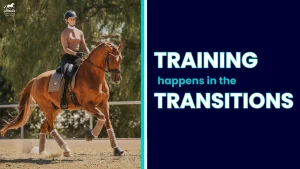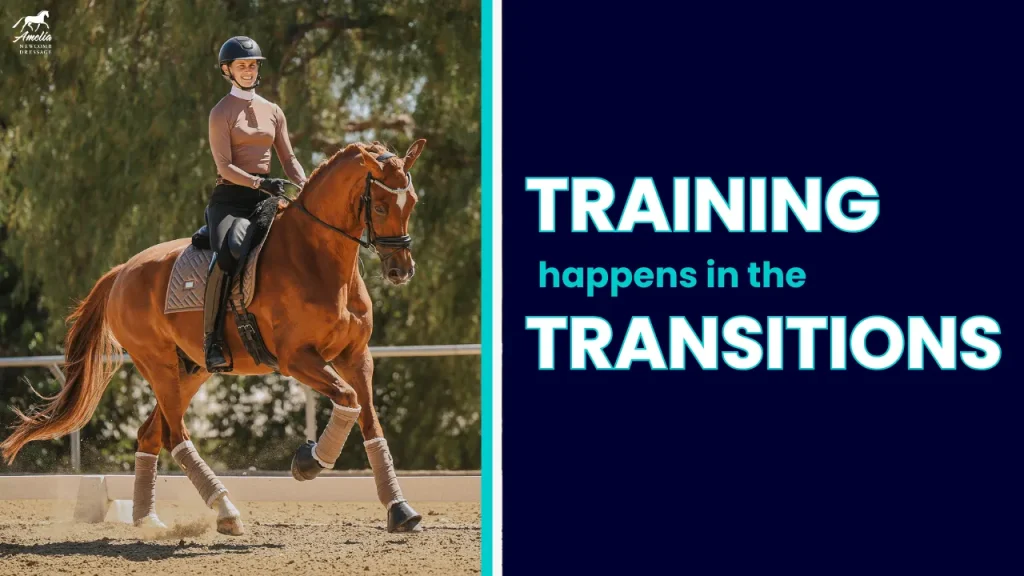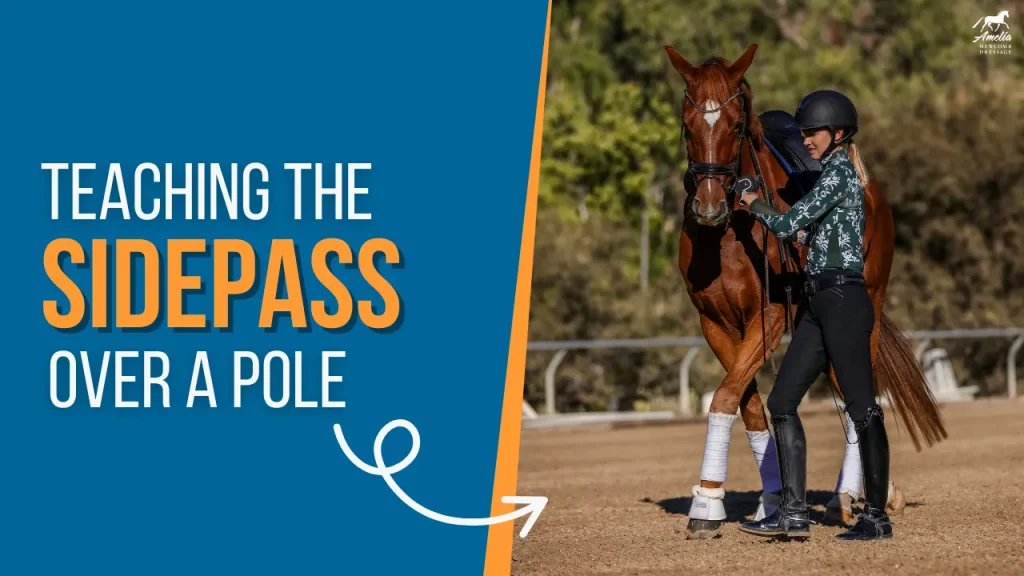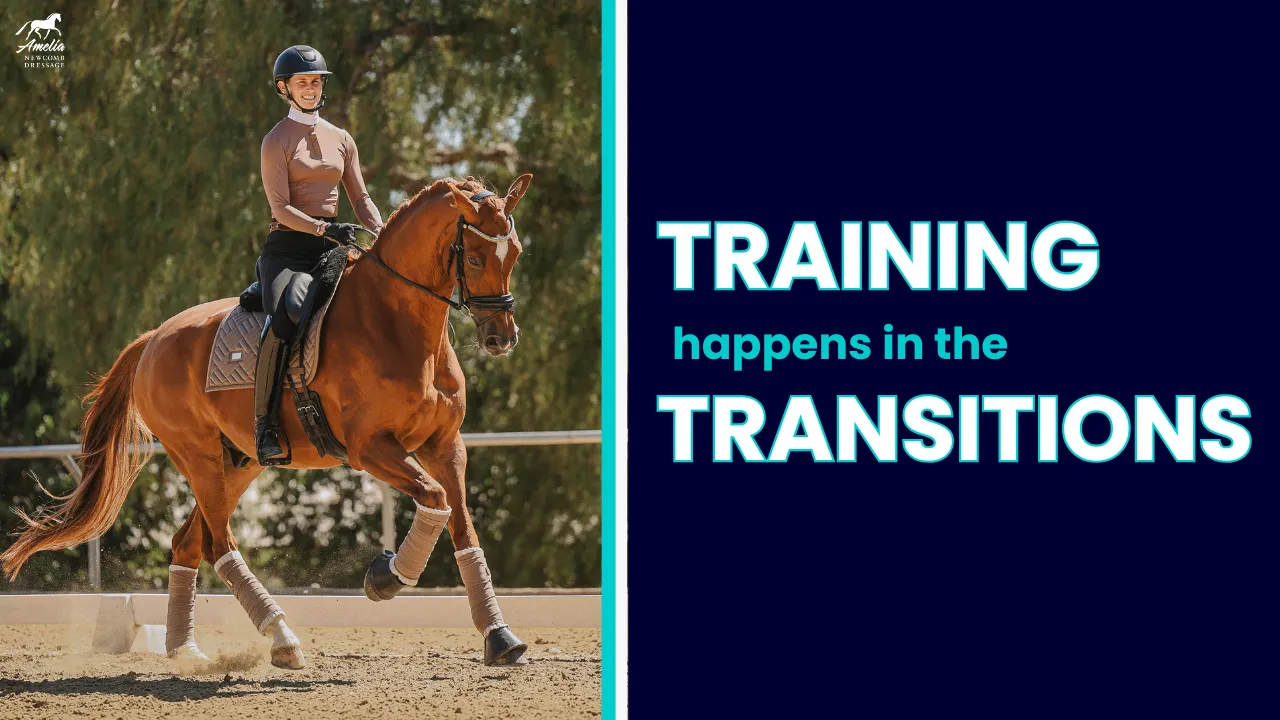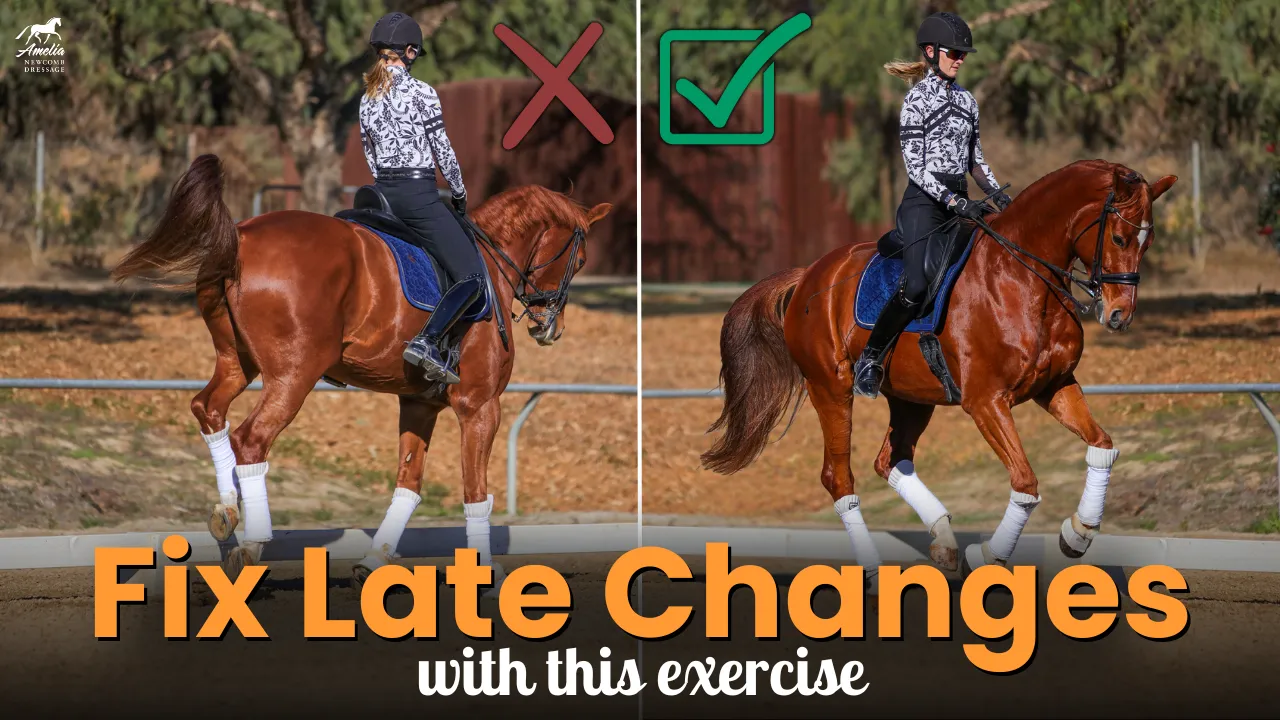Jigging is a common and frustrating issue for many riders, especially when you’re trying to maintain a calm, walk in your Dressage tests. Jigging is when a horse transitions into a short, tense trot instead of maintaining a relaxed walk. This behavior often stems from anticipation, tension, or as an evasion to engaging the hind legs. It’s especially problematic because in Dressage, as the walk is a coefficient, so a poor walk score impacts your overall performance.
Today’s YouTube video is proudly sponsored by Correct Connect, correct your position to develop balance and connection with your horse. Correct Connect offers a wide array of training aids to enhance the balance and comfort for you and for your horse. Improve your riding and improve your horse with Correct Connect. Interested in learning more about what products Correct Connect has to offer? Check out their website here.
Horses like PREs or other “hot” breeds may be more prone to jigging due to their sensitive and energetic temperaments. If your horse struggles with jigging—or anticipating the next movement—then you know how frustrating this can be. While it may be a more challenging habit to fix, with time and patience, you can help your horse learn to relax and wait for you instead of getting worried and jigging. In this video, I will be going over five tips to help your horse relax and prevent jigging:
Top Strategies to Prevent Jigging
- Control the Walk Rhythm – Keep the walk rhythm steady and slightly slower than usual. Your seat should follow the horse’s motion without becoming too loose or overly active.
- Sit quietly and maintain a stable core.
- Avoid pushing your horse too fast with your seat.
- Focus on relaxing your horse’s tempo while keeping activity in the walk.
- Encourage a Lower Head Position – A high head carriage often indicates tension, while a lower neck position promotes relaxation. Use exercises like serpentines and gentle lateral movements to encourage your horse to soften and stretch down.
- Walk small, tight serpentines to encourage bending.
- Take your hands wide to guide your horse’s head down, ensuring you feel contact with the corners of their mouth.
- Consistently encourage relaxation through supple, steady rein contact.
- Incorporate Lateral Work – If your horse begins to jig, leg yield to redirect their energy and focus. Leg yields and lateral work helps keep the horse engaged and teaches them to accept the leg aids without breaking into a trot.
- Practice leg yielding at the walk while maintaining a slow rhythm.
- Practice shoulder-fore positioning with gentle leg pressure to encourage suppleness.
- If your horse starts to jig, push your horse sideways until they relax and resume a proper walk.
- Practice Transitions Gradually – Transitioning between free walk and medium walk can be tricky for horses prone to jigging. Practice transitions by taking up the reins slowly and incorporating a slight leg yield as you shorten the reins.
- Keep your core engaged and seat relaxed during transitions.
- Aim for a “counted walk,” where the tempo is slow and controlled, almost to the point of halting.
- Reward your horse for staying calm and responsive during rein adjustments.
Jigging can be a challenging habit to break, but with the right approach, you can help your horse stay relaxed and confident in the walk. Focus on controlling the tempo, encouraging relaxation through neck position, and incorporating lateral work to redirect energy.
Happy Riding!
Amelia
